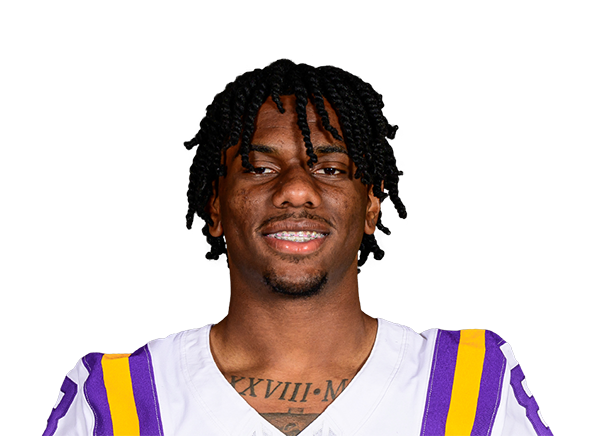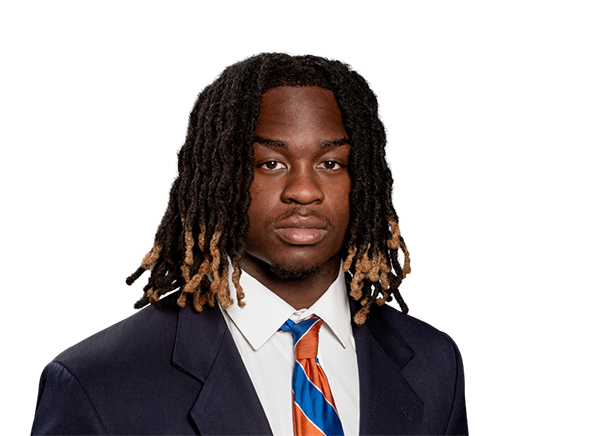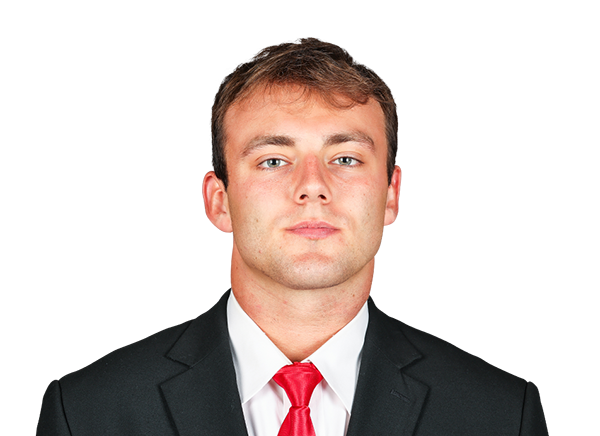We all want to be winners. We all want to be the dynasty that wins multiple championships over five years. The team that everyone is jealous of. That one team that you can post on social media to get the likes and wows from on-lookers. But in reality, we aren’t always that. If you play dynasty long enough, you will eventually be in a rebuild mode. That few-year window where you aren’t winning many matchups but building a championship team down the road. There are a few traps that rebuilding managers fall into that keep them in an inevitable state of rebuilding and never making a move to contender.
Overloading yourself with rookie picks
When a manager decides he wants to go into a rebuild, they do everything they can to acquire picks. They will ship off their veteran players and get picks in the next draft. What sometimes gets missed is what needs to happen between rookie drafts and the start of the season. Roster cut downs. You have to get your fantasy roster down to the limit, and often teams end up drafting more players than they will have roster spots for. Generally, when you are in a rebuild, you pick up a lot of young guys with lots of upside potential. What do you do when you draft ten players and only have five clear drop candidates on your team? Do you cut a two-year player who has shown some flashes but not enough consistent work? Do you cut the fourth-round rookie you just picked and are probably excited for? We get so in love with having a ton of picks the aftermath is often more stressful.
You need to be mindful of this heading into your draft. Before your draft starts, figure out who you are comfortable dropping, and then look at how many picks you have. You must make some moves if the latter is more than the former. Can you ship a player and a pick for a better player? Can you package multiple picks this year to move up? Could you move two-third round picks to move up to the second? What moves can you make? Moving a pick in exchange for next year would help remove the issues. Don’t get stuck where post draft; you have to either drop someone who will for sure be picked up or have to sell someone at a discount because you would rather get something over nothing.
Investing in the wrong kind of youth heading into contract years
When you are in a rebuild, you want to go young. Because of that, managers often get tripped up and take on the wrong type of young players. We all should know that rookie contracts are four years; if they were taken in the first round, there is a fifth-year option. But not all contracts and players are equal.
Position matters. Quarterbacks and running backs are less likely to catch on with a new team after having mediocre “careers” with their first team. Tight ends and wide receivers have a longer shelf life and are slower to reach peak performance. They have a higher chance of being solid on a new team. There is less playbook for them to learn, and they often have an easier pathway to volume. We have seen plenty of wide receivers either sign with or get traded to a new team after their rookie contract and have success. Recently A.J. Brown, Hollywood Brown, and T.J. Hockenson. There aren’t many examples of quarterbacks and running backs finding that second contract on a new team and succeeding.

Age matters. Some guys are older or younger every year than their respective draft class. With a closer look at the 2021 draft, we could have Javonte Williams and Rhamondre Stevenson hitting the free agency market in 2025 and Najee Harris and Travis Etienne in 2026. Williams will be 24.9 years old when he is looking for his next contract, while Stevenson will be 27.0. Over two years of age difference matters. Is Stevenson going to get a three-year contract that puts him on someone’s books till he is 30? Or is Williams more likely to receive one and be on a team until he is under 28?
In the 2026 market, Najee and ETN could be fighting for a contract at the ages of 28 and 27.1. Because they will probably pick up their fifth-year option, they will be fighting against rushers from next year’s class. James Cook, Kenneth Walker, and Breece Hall will all be under 27. Hall will only be 24.8 years old.
Rebuilding managers must keep an eye on age and the free agency class they are entering to see what the market will be for these guys. Just because they were drafted recently doesn’t mean they are the young player who has a long career ahead of them that you expect.
Choosing rookies over proven production
I am guilty of this myself. It comes time for me to make roster cuts, or I’m working on a trade, and I prioritize the unknown upside potential of rookies over more proven but older players. Why do we love rookies? We love them because of the unknown. They can be the next superstar in the league. We believe that we have the golden ticket that will be on our team for the next ten years and be the envy of our league mates. We often glance over the opposite side of that coin that they could be a complete bust, and we end up wasting a roster spot waiting for them to break out, and they never do. Or we get to the middle of the road. They are a solid producer for our fantasy team but not a top 10 at their position type guy. We all want the receiving core of WR1s and flex players that would be starters on everyone else’s rosters. That actually coming true is usually a pipe dream. Everyone believes they have the next Jamar Chase, not N’Keal Harry. We don’t get excited over having a bunch of Terry McLaurins on our team. We get locked into long-term potential and miss out on short-term returns.
What we should be doing is not always looking for the potential return on a guy. Can this player be productive for your team in the next two or three years? How often will they be in your lineup as they are right now? Don’t worry about what happens after that span. It doesn’t always matter what you can get for them down the road. If they help you win now, then that might be good enough.
An example would be Leonard Fournette. Back in 2020, he was cut by the Jaguars, and people thought he might be done. He had two years of top-10 performance and a year in the middle where he was hurt. He signed on with the Buccaneers and was traded away because people wanted the new rookies coming in. In that draft, it wasn’t out of the realm of possibility that you could have traded Fournette for his backfield mate Ke’Shawn Vaughn who was being drafted in the third round. In fact, to date, Fournette has scored more PPR fantasy points than everyone going in the 3rd round of the 2020 drafts except Antonio Gibson. That’s more than Anthony Mcfarland, A.J. Dillon, Joshua Kelley, Jordan Love, Chase Claypool, Devin Duvernay, Cole Kmet, Van Jefferson, and Darrynton Evans. He is only 23 points behind Gibson currently. If you traded for any of those you lost over the past three years, and even with Gibson, you got less consistent production week to week. Gibson’s best overall finish in that span was RB12 in 2021, while Fournette was RB2 that year.
If you have Fournette on your roster now, you can’t get anything for him. But only five of those players still hold dynasty value. And they will have to produce for the next two years to get to Fournette’s point totals. Don’t be afraid to acquire some proven talent who you might ride until they are done. They are valuable assets on your team and let you take risks elsewhere.
Understanding Supply and Demand
It’s an economics principle that we all know but often miss when it comes to fantasy football. It plays out in the dynasty for rebuilding managers in two ways. The first is when it comes to trading. When rebuilding, you are looking to move assets to contending teams. The issue is there is probably at least one other team in the rebuild as well. You have to look at what assets they are also trying to ship out. Are you both trying to peddle your veteran quarterback? If so, that probably drives the cost down if there is only one team looking to acquire a quarterback for a championship run. Nothing will be worse than seeing the other team get a return on their guy while you are left holding the bag. Look around the league and see what the demand is. Are there teams that are close but need wide receivers? Can you fill that demand with your supply? Trading is fun in fantasy but also challenging, and often that comes because you are either asking too much for a player or trying to give them a player at a position they don’t need. Be mindful of what teams need and what you can offer them to fill the voids in their roster.
It also comes into play when looking at the futures of players. What do the free agency market and draft class look like? This past year is a great example. It was a very deep group on the market and a deep draft class for running backs. But it lacked top-end talent. What we saw were the top guys getting franchised tagged while aging vets are left still looking for a contract and their teams drafting a middle-of-the-road guy.

2022 was similar for wide receivers. We saw three massive trades in Tyreek Hill, A.J. Brown, and Hollywood Brown. Those trades were made because the draft class was very top-heavy, and teams could invest in a blue-chip prospect to replace those guys. Likewise, we saw guys like Christian Kirk get a big contract because the free agent market was bare, the 2023 draft and free agency class was lackluster, and they weren’t in a position to get a top guy in the draft without reaching for one.
Much like earlier about the age of players seeking contracts, you need to know how many players will be looking for new spots. That’s the supply. Then look at demand. How many teams are looking for a player in that role? How many teams need a starting quarterback, and how many of them are available in free agency and the draft? What about starting running backs? How many good landing spots are there for one? If you can figure that out, you can use other tools to see who might be the ones that actually get the role.
Get more of the Dynasty Nerds!! Download the Bettor Sports Network free app and listen to Dynasty Nerds Live hosted by Dynasty Price, Thursday night from 10 pm to midnight. When you download the app you can call into the show with just a push of a button.

















